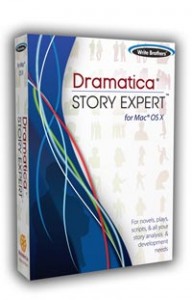Why, we could make social networks even more fun and compatible. We could build communities. We could better organize our clubs, better target our political parties, better understand our neighbors. We could improve advertising, more fairly judge punishments in court, predict what our adversaries might do. In fact, we might even be able to find home-grown terrorist and mass killers before they strike.
Problem is, though there are many theories, classifications and tests for personality, while each sheds some light on the issue, few of them have much overlap. Even definitions of “personality” show why, though we all can feel what personality is, we have very little understanding of what it is.
From Wikipedia:
Personality is the particular combination of emotional, attitudinal, and behavioral response patterns of an individual.
1. the visible aspect of one’s character as it impresses others:He has a pleasing personality.
2. a person as an embodiment of a collection of qualities: He isa curious personality.
3. Psychology.
a. the sum total of the physical, mental, emotional, and social characteristics of an individual.
b. the organized pattern of behavioral characteristics of the individual.
4. the quality of being a person; existence as a self-conscious human being; personal identity.
5. the essential character of a person.
As I often describe it, every story has a mind of its own: its own psychology and its own personality. Its psychology is determined by the underlying dramatic structure and its personality is developed by the storytelling style.
Well, after all these years, I’d like to revise that a bit. A story’s psychology is determined by the underlying structure and dynamics. A story’s personality is developed by the subject matter and style. A story’s persona is the combination of it’s psychology and personality.
You’ll note here that I have added a few things and rearranged the hierarchy around as well. To begin with, I added the word “dynamics” to “structure” in defining a story’s psychology because structure only describes the arrangement of elements the drive a psychology, but dynamics describes the potentials, resistances, currents and powers that determine how those elements will rearrange in the course of psychological function.
In addition, I added “subject matter” to “style” for without something to talk about, it doesn’t really matter how you say it.
And finally, I added a whole new level that combines both psychology and personality into the story’s persona. What is “persona?” I intend it to mean the sum product of our (a story’s) nature (structure), nurture (dynamics), experience (subject matter), and learned behavior (style). In short, it is our interface with the world – in essence, our face to the world.
Here’s how other’s define “persona.”
From Wikipedia:
A persona, in the word’s everyday usage, is a social role or a character played by an actor. The word is derived from Latin, where it originally referred to a theatrical mask.
From Dictionary.com:
4. (in the psychology of C. G. Jung) the mask or façade presented to satisfy the demands of the situation or the environment and not representing the inner personality of the individual; the public personality.
5. a person’s perceived or evident personality, as that of a well-known official, actor, or celebrity; personal image;public role.
Well isn’t that a paragraph worth reading twice, I ask you! (Yes it is, I tell you).
Suggested by all this is that existing methods of defining and anticipating personalities are insufficient and therefore inaccurate because, while they have the persona down pat, personality and psychology can only be inferred from observation of the interface and not by direct observation.
Now we’d basically be screwed if it weren’t for an extremely fortuitous aspect of Dramatica narrative theory – the concept of fractal psychology. It holds the key to directly observing a story’s (or a person’s) psychology. And once that and the persona are both known, the personality can be calculated as the differential between the two.
Bear with me now as I take us on a little journey into the workings of fractal psychology, which will eventually lead us to a means of discovering the true underlying personalities of people both as individuals and in groups of any size.
Fractal psychology is the notion that when we gather in groups for a common purpose or to address an issue of common concern, individuals begin to specialize psychologically in terms of their function within the group. One will emerge as the voice of reason while another will take a skeptical position, for example.
The value of this specialization is that it brings greater fidelity in exploring the issue than would be achieved by having all members of the group be general practitioners, each trying to look at the problem for all perspectives, including our examples of reason and skepticism.
In a nut shell, each of these specialties is a function we have available in our own minds. By specializing, an individual gains value and potentially power. And, the group gains greater insight and capacity. So, driven by the personal motivations and collective benefits, any group of sufficient size will eventually self-organize into what is, effectively, a functional analog for the operating system and methodology of a single human mind.
And this means, the inner workings of psychology are mirrored in the definable and predicable externally observable world of human social organizational interactions. Now isn’t that a concept worth savoring!
Obviously there are a virtually unlimited number of applications one might create if you could define that system and use it not only to understand the workings of social groups, but also of individuals as well by projecting the system back into the minds from whence it came.
Nice dream, but how do you actually discover and document the elements of this organizational system? And even more challenging, how about the dynamics that describe the forces at work in such a system? They are harder to see, and even more difficult to quantitatively define.
Tough task. Where should we begin? Well, fortunately, someone already had started the process. Who? Authors and storytellers, as unlikely as that seems. You see, the reason for fictions is to look at human relationships in the hope of finding some repetitive patterns from which we might draw truisms that we can apply in our own lives.
If human interactions were truly chaotic, this would be a hopeless endeavor. But, since humans self organize into predictable patterns, these can be documented, and in fact they have been.
Literally thousands of generations of storytellers, in their attempt to reflect the reality of the human condition gradually refined these organizational interactions into the conventions of narrative structure and dynamics that we know today. And they carried the process quite a way along – but not all they way.
Without the understanding that organized human systems represent or mirror the functioning of a single human mind (we all it a Story Mind), there was no framework upon which storytellers could hang their collection of human elements and drives. They lacked a unifying perspective that could congeal the components of their understanding into a cohesive functional and predictive model.
And that is where we came in. Armed with our Story Mind concept, we recognized that framework, and seeing what it was, were able to further refine it into the Dramatica theory of story.
Let’s pause for a moment to take stock. In documenting the human condition, generations of storytellers identified many of the consistent elements and forces that define the way people relate. Because people in groups specialize and eventually self-organize into a system functional identical to the psychology of a single human mind, we were able to refine narrative conventions into an accurate model of the mind itself, at the level of psychology, below the level of personality.
Fine. We have a model of the mind. Now what does this enable in terms of defining and identifying personality types? To answer that question, let’s first take a look at the limitations of current approaches and then lay out how the Dramatica Theory can transcend those barriers.
Recall, early on in this article, that I mentioned the triumvirate of psychology, personality, and persona? Fact is, no one can ever directly observe any of those three except the persona – the mask, or publicly presented face of an individual or group. Psychology and personality can only be inferred. But since persona almost always is intentionally or at least unintentionally misleading, any inferences made from it are generally fuzzy and inaccurate at best.
If it weren’t for fractal psychology, for the model of the Story Mind, there’d be no getting around this. Yet with this model, we are able (essentially) to subtract the Story Mind component from the persona, leaving the pure personality behind. In plain speak, if you know the mask, and filter out the psychology, what is left is personality.
Now because personality (which consists of subject matter and personal or group interest) is built on top of psychology, it all falls into those cubby holes defined by the psychology. And this means that personalities fall into types.
The key to understanding how this works is to recognize that we all have the same psychological components, both structural and dynamic, but how much emphasis we give each one, how often we use them, this is determined by the subject matter and our interest in it.
So, while psychology alone can tell you about an individual’s or group’s mind set, and personality alone can tell you about an individual’s or group’s interests, it is the combination of the two that defines the true kind of type we ought to be defining. In other words, any given mind set (Story Mind) is neither good nor bad until it is applied to a particular real world subject.
Conceptual example: Is it moral to steal? No, if you are simply greedy; yes, if you are trying to feed your starving baby by taking from a tyrant who is hoarding all the food. It all comes down to context. Again, one psychology is neither good nor bad, until it is contextualized by personality (subject matter in which it operates).
And so, if we want to identify who is going to bring a gun into a theater and kill dozens of movie-goers the visible persona mask will not tell us, no matter how much number-crunching statistical data or tracking of purchases we do. But if we combine the interest in particular subject matter with specific psychologies, we can, in fact, predict the dangerous personality.
Further, if we look back at the historic record of the kinds of personalities we wish to become aware of before they act, we can determine their Story Mind psychologies and independently determine their subject matter personalities, and then statistically determine which combinations of the two appear over and over again in those who eventually act.
My expectation is that such a study and analysis would produce several different combinations of psychology and personality matching, each of which would represent a different “type,” though in the end all of those types might end up acting in the same way.
In this manner, a variety of different templates could be applied to the general population of individuals or even of organized groups, to identify those which may ultimately cause problems for society as a whole.
Preventive vigilance or Minority Report? You decide.







No comments:
Post a Comment